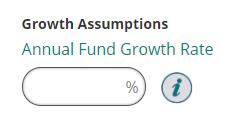A goal must be created for every new piece of research. The first section of the goal details is to input basic information which helps determine term and tax of your projection.

Goal Name – This is the name of the goal, this information is saved back to the Retirement Goals section so that it is identifiable. Goal names must be unique; the system will not let you input a goal name that already exists next to a client record.
Drawdown Start – This information can be either an age or a date that you would like the drawdown plan to start.
Forecast Life Expectancy – This figure is pre calculated utilising ONS statistics, it is determined from the clients DOB and gender. If required this figure can be overridden.
Scottish Tax Rules – This option allows you to toggle whether the system uses Scottish Tax rules or not. This determines which tax bandings are applied within the calculations.
Review Date – This value defaults to one year from today’s date however, this can be changed to any date that you require.
Growth Assumptions – This figure is the value that you believe is a realistic rate that the drawdown policy will grow. This figure is used in the calculations of the income analysis and taken through to the product comparison journey.

Adviser charges – the adviser charges are prepopulated from your service level if the client has had a service level assigned to them during client set up. If no service level is against the client selected then the default values will be zero for all four inputs.

Provider product charges – these are needed to calculate the charges coming out of the drawdown product. Putting values in here will give a more realistic idea of how achievable the income profile is. Values can be input either as Individual Charges or as a Reduction in Yield (RIY).
If you are using RIY as the input type, please note to give a true reflection in the results the RIY figure used should be on the same basis as the growth rate figure input.

After inputting the goal details, there are two routes through the income analysis section; either you can continue through the prescribed steps. Alternatively, you can skip straight to the results page and build the information there instead.
If you decide to go the results page route then please see article 'Research through the Results page'.

